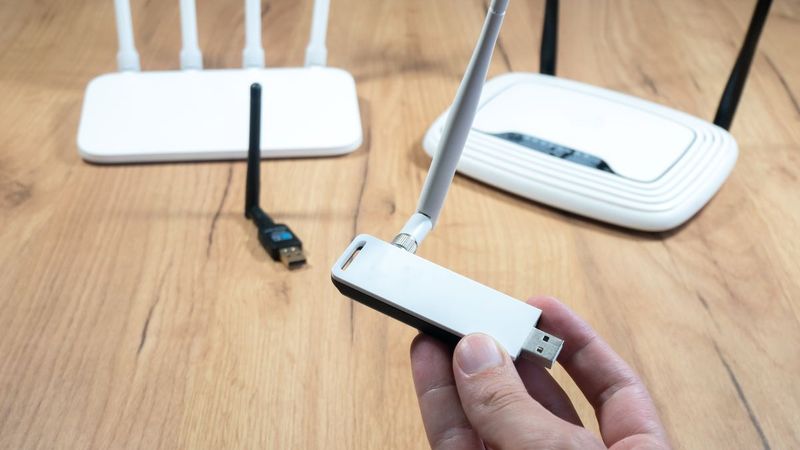Enhancing IoT Connectivity With Cutting Edge Antennas
Discover how cutting-edge antennas are transforming IoT connectivity, ensuring reliable communication, extended range, and energy efficiency for diverse applications. Learn how to select the suitable antenna for your IoT devices to maximize performance and streamline your development process.

Crucial Role in Enabling Wireless Communication Between IoT Devices
The Internet of Things (IoT) encompasses a network of physical devices, vehicles, domestic appliances, and other items integrated with electronics, software, sensors, actuators, and connectivity. Through this connectivity, these entities can interconnect and exchange data. The resulting interconnectivity of these devices presents prospects for efficient data collection and analysis, thereby facilitating automation, enhanced decision-making, and the emergence of novel business models.
Antennas are absolutely vital for IoT devices, serving as the critical components that enable seamless communication and data exchange. A dependable antenna solution is absolutely paramount for the successful operation of IoT devices due to several key reasons: ensuring data integrity, extending network coverage, conserving battery life, withstanding environmental conditions, enabling miniaturization, and offering cost-efficiency. In essence, a reliable antenna serves as the cornerstone for a successful IoT deployment, guaranteeing the seamless operation of devices, the accuracy of data, and the overall efficiency of the IoT network.
Amphenol RF is a prominent global leader in the design and manufacturing of high-performance RF connectors, cable assemblies, and antennas. Amphenol RF's antennas are engineered to operate seamlessly in various IoT applications, ensuring optimal signal transmission and reception.
Selection Considerations for IoT Antennas
The selection of an appropriate antenna is a critical phase in IoT device development since the performance of the antenna directly influences the range, reliability, and overall operational efficiency of the device. When selecting an antenna for an IoT device, several key factors must be considered to ensure optimal performance, reliability, and compliance with regulatory standards. These factors are critical for engineers to make good decisions while selecting IoT antennas.
Frequency Range
Selecting the appropriate frequency range for an IoT device is crucial as it influences performance, range, power consumption, and application suitability. For instance, for engineers who require long-range, low-power for their IoT devices, Sub-1 GHz frequencies, such as 433 MHz, 868 MHz, and 915 MHz, are ideal due to their better penetration through walls and obstacles, making them suitable for devices that need to communicate over longer distances. Common protocols for these frequencies include LoRaWAN, Sigfox, and NB-IoT.
The 2.4 GHz frequency range is commonly preferred for short to medium-range applications, including Wi-Fi®, Bluetooth®, and Zigbee® protocols. The 2.4 GHz range is ideal for home automation, wearables, and industrial IoT devices since it offers a balance between range and data rate. Examples of devices operating in this range include smart home devices, fitness trackers, and industrial sensors.
Similarly, the 5 GHz frequency range supports high-speed, short- to medium-range applications, providing higher data rates than 2.4 GHz. It is ideal for video streaming, online gaming, and demanding IoT applications such as smart TVs, high-definition cameras, and augmented reality devices. Therefore, when selecting an antenna for an IoT device, these frequency ranges should be considered against the required applications.
Bandwidth
Bandwidth also plays an important role in antenna selection. For instance, for engineers looking for a suitable antenna for low data rate applications like environmental sensors and asset tracking, where infrequent data updates and long battery life are crucial, narrowband frequencies (bandwidth less than 10 MHz) are suitable. On the other hand, for high-data-rate applications requiring fast data transfer, such as video streaming, real-time monitoring, and industrial automation, including smart cameras and industrial robots, wideband frequencies (bandwidth greater than 20 MHz) are a preferred choice.
Size and Space
The physical dimensions and profile of the antenna are significant considerations, especially for compact IoT devices. The length, width, and height of the antenna should fit within the device's design constraints without compromising its aesthetics or functionality. Additionally, the thickness or profile of the antenna is particularly relevant for low-profile applications to ensure that the antenna does not interfere with other components or the device's usability.
Mounting options are another critical aspect since the methods available for attaching the antenna to the device, such as Printed Circuit Board (PCB) mount, affect the ease of installation and the potential for secure, reliable connections. Moreover, the ground plane requirements, including the size and characteristics needed for optimal performance, also influence antenna efficiency and signal quality.
Gain
Antenna gain is measured in decibels and can have two common reference points: dBi and dbd. The term "dBi" refers to the gain relative to an isotropic source, which is a theoretical point source that radiates equally in all directions. This differs from "dBd," which measures gain relative to a dipole antenna, a more practical reference antenna type. Engineers prefer using dBi as a standard because it provides a universal reference point, making it easier to compare the performance of different antennas across various applications. While higher gain typically equates to a longer range, it can also narrow the coverage area. Engineers must carefully balance gain with the specific requirements of the application, considering factors such as required signal strength, radiation pattern, beamwidth, and polarization since all these factors have a great impact on the selection.
For instance, the radiation pattern, a graphical representation of the antenna's directional characteristics, determines how the antenna distributes energy in space, affecting coverage area and signal strength. Beamwidth, the angular measure of the antenna's main lobe, on the other hand, affects the focus of the signal, where narrower beamwidths provide higher gain but less coverage area. Similarly, polarization, the orientation of the electric field, impacts signal quality and reduces losses when matched between transmitting and receiving antennas.
Environment
The environmental conditions under which the antenna operates significantly affect its performance and longevity. The operating temperature range in which an antenna can function reliably is crucial for ensuring functionality in various environmental conditions, particularly for outdoor or industrial applications. Humidity tolerance is also essential for protecting against moisture damage and ensuring long-term reliability. In this regard, the Ingress Protection (IP) rating is a deciding factor as it indicates the level of protection against solid particles and liquids, ensuring durability in harsh environments. Additionally, the ability to withstand mechanical stresses, such as shock and vibration resistance, ensures the antenna remains functional in high-vibration or impact-prone environments.
Regulatory Compliance
While selecting the antenna, engineers should make sure that the antenna complies with regulatory standards such as USFCC (Federal Communications Commission) and CE (Conformité Européenne) to ensure legal operation, safety and electromagnetic compatibility. Additionally, country-specific regulations may vary by region, requiring additional considerations to ensure global compliance and allow for international deployment of IoT devices.
Amphenol RF Antennas: Designed for Diverse IoT Applications
Amphenol RF's Resources for Antenna Selection
Amphenol RF offers a suite of resources to aid in the antenna selection process. Their online selection tools enable engineers to filter antennas based on specific criteria, while technical datasheets provide detailed specifications and performance characteristics to simplify the decision-making process and ensure engineers choose antennas that meet their specific requirements. Moreover, access to application engineers for expert guidance enhances the selection process by providing tailored advice and support based on practical experience and technical expertise.
Features and Applications of Different Amphenol RF Antenna Types
Amphenol RF offers a wide range of antenna solutions with distinct features tailored to specific IoT applications.
Amphenol RF Embedded Chip Antennas
Amphenol RF embedded chip antennas are designed for space-constrained devices where compact size and streamlined design are crucial. These antennas are directly mounted on the PCB, making them ideal for wireless communication applications like Wi-Fi, GPS, Bluetooth, and IoT devices. Embedded antennas seamlessly integrate into the device's structure without compromising performance. They offer several advantages, including simplifying the design process, reducing manufacturing costs and saving space. These antennas are ideal for devices like smartphones, tablets, smart home devices and industrial sensors.
Amphenol RF Internal Antennas
Amphenol RF internal antennas, including Flexible Printed Circuit (FPC) and PCB types, are used in modern electronic devices. FPC antennas are flexible, allowing them to fit into irregular spaces, making them ideal for wearables, IoT devices, and curved surfaces.
PCB antennas, on the other hand, are rigid and integrated directly onto the device's circuit board, providing a flat, board-like appearance. These antennas are particularly suited for IoT, Wi-Fi, and LTE applications, offering dual-band, multi-band, and wideband options. They feature a secure adhesive backing for easy installation and a low-profile design, ensuring reliable RF performance in compact devices. Amphenol RF internal antennas are ideal for applications including smart speakers, smart Meters, drones, tablets, smart TVs, and routers.
Amphenol RF External Antennas
Amphenol RF external antennas are designed to be mounted outside electronic devices or structures to enhance wireless communication. These antennas improve signal range and quality, making them perfect for cellular networks, Wi-Fi routers, and satellite communications. Amphenol RF external antennas are available in various shapes and sizes, including designs like monopole and dipole for higher power transmission and reception. They are ideal for WLAN/WWAN, Bluetooth, and IoT applications.
The standout features of Amphenol RF external antennas include familiar RF interface connections (SMA, RP-SMA, AMC, N-Type), single, dual, and wideband options, and, most importantly, IP67 configurations. The antennas used in outdoor environments are prone to harsh environmental conditions; in this regard, the IP67 configuration helps them to endure these conditions effectively without compromising quality, making them perfect for applications like industrial automation. Moreover, these antennas are used in access points, radios, navigation systems, routers, set-top boxes, surveying equipment, and security cameras.
Amphenol RF's diverse antenna portfolio ensures that there are optimal solutions for various IoT applications. Whether the need is for a compact, embedded antenna for a wearable device, a flexible internal antenna for a smart home application, or a robust external antenna for industrial use, Amphenol RF provides antennas that meet the specific requirements of each application.
Discover the Power of IoT Antennas
Amphenol RF products are engineered to deliver exceptional performance in terms of signal strength, coverage, and durability. Whether you're developing a smart home device, industrial sensor, or wearable technology, Amphenol RF has the antenna to meet your specific needs.
The IoT antenna is the linchpin of any IoT device, and its performance directly translates to the device's reliability, range, and user satisfaction. A suboptimal antenna can compromise connectivity, leading to data loss and user frustration.
With a strong commitment to innovation and quality, Amphenol RF provides comprehensive resources, including online tools and expert support, to assist engineers in selecting the optimal antenna for their projects. By leveraging Amphenol RF's expertise and product portfolio, you can accelerate your IoT development process and build devices that deliver exceptional performance and user satisfaction.
Ready to elevate your IoT project? Explore Amphenol RF's antenna solutions today.
Reference
- Amphenol RF IoT Antenna Solutions. Mouser Electronics. [Online], Available at: https://eu.mouser.com/new/amphenol/amphenol-rf-antennas/ (Accessed on August 4, 2024)

